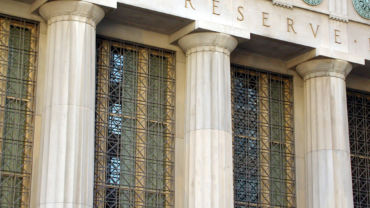These days, everyone has a guess about whether the Federal Reserve will change the target federal funds rate. This post explores key factors that influence federal funds rate cuts or increases.
The target for the federal funds rate is currently a range of 2.25 percent to 2.50 percent. The Federal Reserve’s Federal Open Market Committee (FOMC) last changed the target in December 2018. At that time, the FOMC increased the target by 25 basis points.
In early 2019, many were betting on more increases to the target federal funds rate over the course of the year. As of today, the tides have turned. Economic growth has slowed. In recent remarks the first week of June, Federal Reserve Chairman Jerome Powell left the door open to cut rates, noting trade tensions with China. Investors in the stock market are currently predicting a rate cut. Others say it’s too soon to know. No one can predict the future. However, it can help to understand why the FOMC cuts or raises rates.
What motivates the FOMC to change the target rate?
The primary goals of the FOMC are to maximize employment, stabilize prices, and promote reasonable long-term interest rates. Adjusting the target for the federal funds rate is the main tool the FOMC has to achieve these goals. The FOMC considers factors such as present economic conditions, the labor market, inflation, and future economic forecasts to make rate decisions. The FOMC aims for inflation around 2 percent for a healthy economy.
The FOMC increases the target federal funds rate to restrain economic growth. Some factors that may lead to a rate increase include:
- Low unemployment that cannot be sustained
- Overly strong demand for goods and services
- Rising inflation
Increasing the target rate can help combat inflation and bring product demand and unemployment to more sustainable levels.
The FOMC decreases the target rate to spur economic growth. A decision to decrease the rate may be in response to the following factors, among others:
- Rising unemployment
- Slow overall demand for goods and services
- Declining inflation
After a rate decline, the economy typically experiences a boost in product demand and the creation of new jobs.
What’s next?
Hold tight to your seat. Rampant speculation will remain about the FOMC’s next move. Ultimately, we won’t know until it happens.
In today’s world, the economy can shift at the drop of a hat (or a late-night Tweet). Some factors to watch include:
- Trade tensions with China
- The global economy
- Risks such as Brexit
- The U.S. labor market, consumer confidence, and inflation
The FOMC could change its target for the federal funds rate or leave it unchanged. A change could be a decrease or an increase. A change could happen one or more times before the end of the year.
Earlier this year, Chairman Powell mentioned remaining “patient.” In other words, he was not rushing to change interest rate policy. A lot has changed in the past few months. In recent remarks, Powell noticeably failed to mention patience. Could the Fed’s patience be running out? We will stay tuned to find out…
Want to stay up to date on the federal funds rate?
Get updates on changes to the federal funds rate and potential accounting effects in the Accounting & Compliance Alert, included with Checkpoint. Get the trusted tax and accounting answers you need to not only ensure compliance accuracy, but the additional insight and resources you need to make confident decisions quickly and add more value to your firm or business. Start your free Checkpoint trial today.





